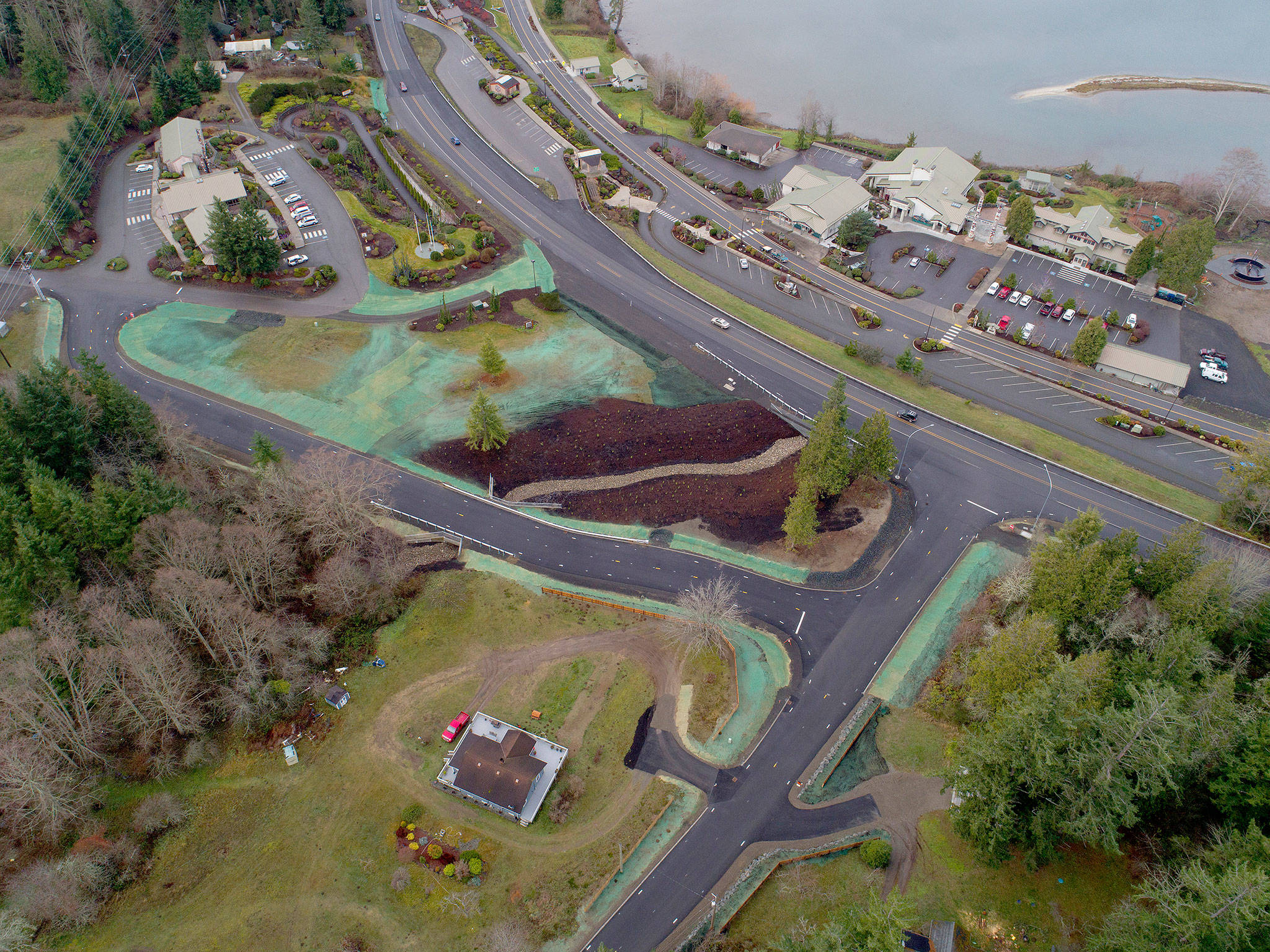A US Highway 101 safety project 10 years in the making — and five months in construction — is complete.
The final touches for the the Chicken Coop-Zaccardo Intersection Improvements Project were finishes in mid-December, the Jamestown S’Klallam Tribe announced last week, the culmination of a decade-long effort in planning, design, permitting and construction to help reduce potential safety hazards in a stretch of highway adjacent to tribal land in Blyn.
“This project is intended to contribute to the highway safety for the community as they use these roads to access their homes in the area, as well as tribal program access,” Tribal Chairman W. Ron Allen said.
In partnership with Washington State Department of Transportation and Clallam County, the Jamestown S’Klallam Tribe oversaw the consolidation of two highway access points into one starting in July 2017.
The two closely spaced Chicken Coop Road intersections at milepost 271.59 were combined into one realigned intersection onto US 101.
The Zaccardo Road intersection was closed and realigned to intersect with Chicken Coop Road off the highway.
Other improvements to the US Highway 101 section include a westbound, left turn pocket to Chicken Coop Road, an acceleration lane for left turns out of Chicken Coop Road to westbound US 101 and an eastbound right turn pocket into Chicken Coop Road.
Local utilities were relocated from overhead lines to underground lines through this stretch of highway, a move tribe officials say reduces the risk of accidents caused by lines downed by storms or by vehicle accidents caused by collision with poles.
Environmental mitigation included the realignment and restoration of No Name Creek and wetland and stream buffer plantings. A wider, fish-passable concrete box culvert now carries No Name Creek under the new Zaccardo Road.
“The Tribe is honored to help in the growth and development of Blyn,” Allen said. “In this case, a transportation infrastructure project also allowed us to improve habitat conditions.”
Funding for construction of the project came from Jamestown S’Klallam Tribe (through annual allocation of Tribal Transportation funds and tribal discretionary funds), Federal Highways Administration and Clallam County.
Jamestown Excavating was the contractor, working with prime sub-contractor Lakeside Industries. Design and engineering work was done by Parametrix.



